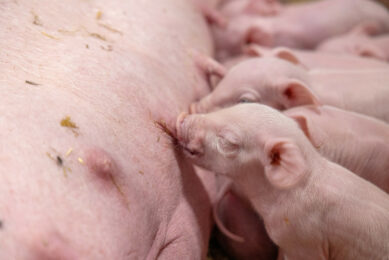Are we being hoodwinked again?

Danmap, 2015 has just been published and have also found that ‘consumption of meat may currently be considered an insignificant source for the human infections’ of E. coli carrying Extended Spectrum Beta Lactamase (ESBL) or cephalosporin-resistance genes.
The Danes, like the Swedes have been looking at the transfer rate of ESBL resistance genes comparing those found in meat with those found in human blood infections again using genetic markers via multi-locus sequence typing (MLST). Their results were similar to the Swedes at 1/241, meat and human ESBLs or 0.41% of cases, whereas the Swedes were 1/379 or 0.26%.
A clearer picture is coming together
If we collate the data from three recent studies (Wu and others, 2013) looking at ESBLs isolates from animals and food and man from the UK, Netherlands and Germany, where they found 0/127 was the same, a clearer picture is now coming together.
If the results are combined, it can be seen that 0.27% of ESBL resistance genes from animals and food (meat) may be associated with human infections and 99.73% are associated with the use of antibiotics in man. Many of the previous assumptions of transmission have not taken into account the epidemiology of ESBL spread amongst the human population, particularly in hospitals and care facilities amongst the elderly. In the Danish work the average age of patients with the condition was 70 years and the mortality rate was 11%, so a severe infection.
Meat and insignificant source for human infections
However, somewhat surprisingly, we can see why the Danes, yes the DANES, are saying that “consumption of meat may currently be considered an insignificant source for the human infections.”
This is a major step forward in our understanding of the indirect transmission of resistance between animals to meat and man. We are actually starting to put a figure on it, rather than using the word ‘potentially’ all the time. This is almost the favourite word of the legislators/regulators and the anti-antibiotic lobby. It has almost become the perception that they must be right and their ‘potential risk’ data is accurate, as it is repeated so often that one becomes brainwashed into believing it. This is how the ‘precautionary principle’ arose regarding the banning of antibiotic growth promoters, which was shown to be flawed and caused a possible over-reaction, not based on science. Are we being hoodwinked again?
Potential major ramifications for future legislation
This could have potential major ramifications regarding future EU legislation. The European Parliament has taken down their Com-ENVI report and it is undergoing an internal review. Presumably, they will have to publish a retraction of the original – or an acknowledgement that there were shortcomings in it.
The European Commission and European Medicines Agency are reviewing the categorisation of antibiotics in a meeting on the 26th of November. The EU has already published an alternative list to the World Health Organisation (WHO), whose list is considered over-restrictive. Does this mean that penicillins, aminopenicillins (amoxicillin), beta-lactamase inhibitors (clavulanic acid) and 3rd and 4th generation cephalosporins might become Category 1, rather than Category 2, provided they are used responsibly under veterinary control, as “the risk to public health is currently estimated low or limited?”
What do you think?











